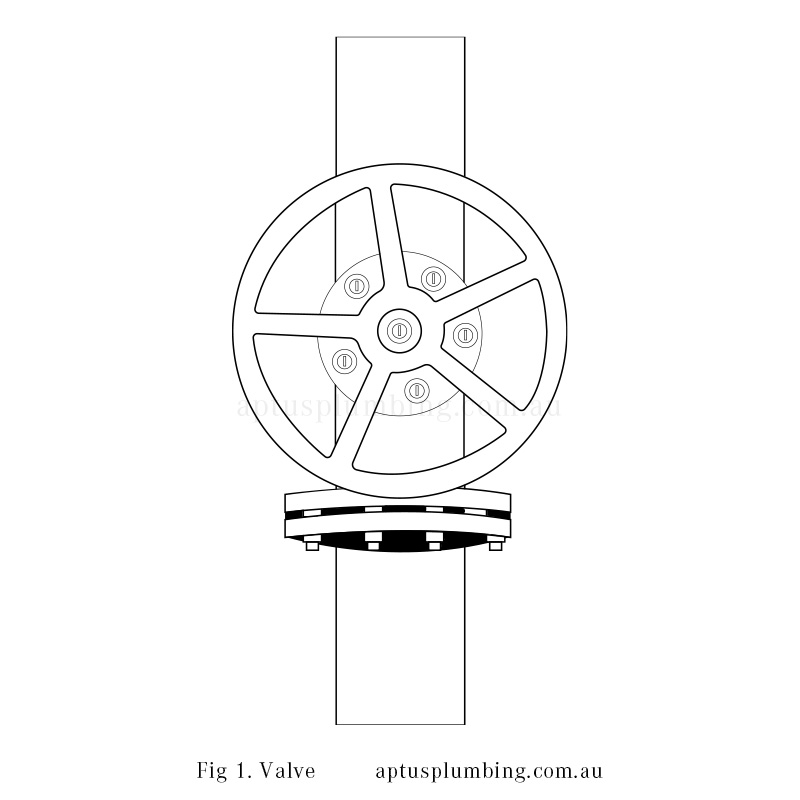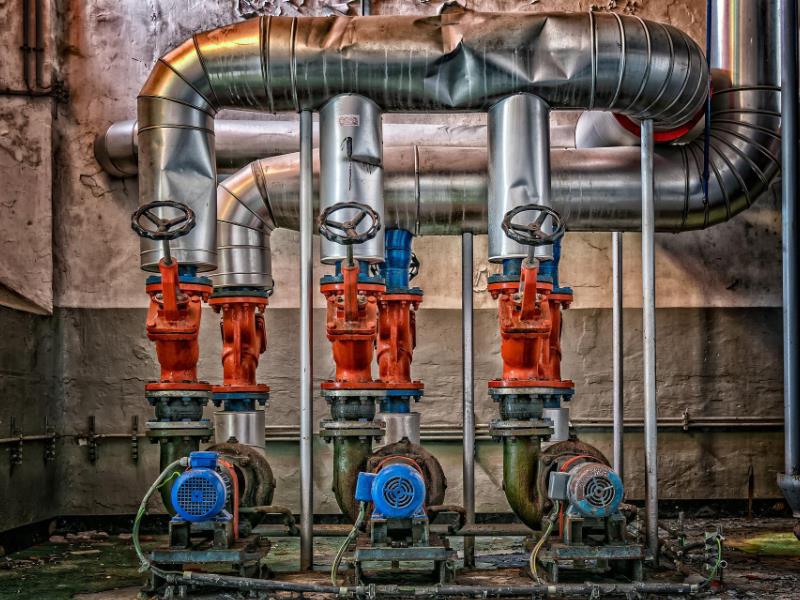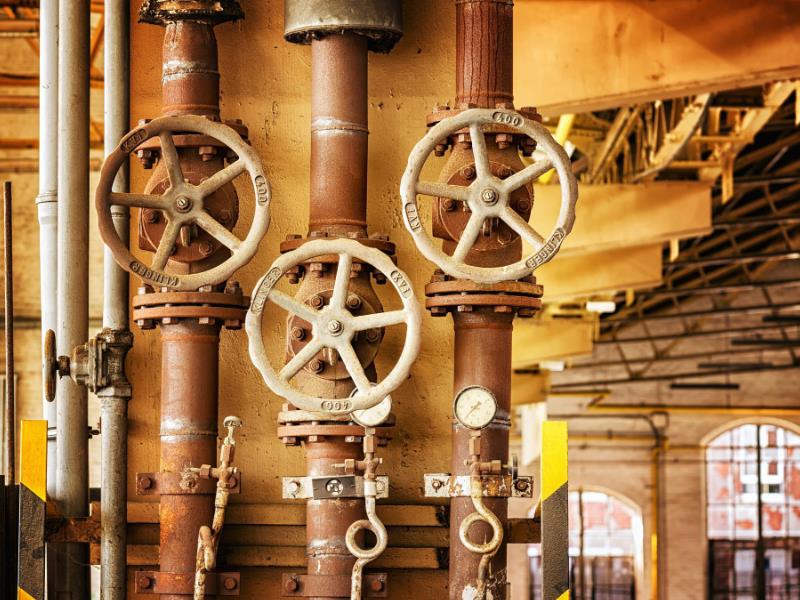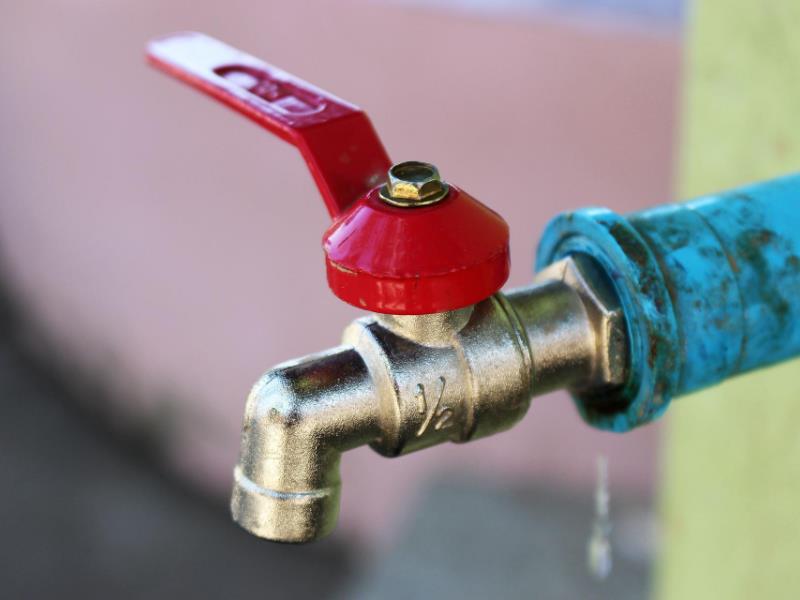Valves
Home / Wiki / ValvesLast updated Thu 14 Apr 2022
In plumbing, the flow of fluids and gasses is commonly directed and controlled by a valve. Valves are able to influence fluids by opening up and closing off various segments of a piping system, thus altering the way gravity and pressure affect the fluid.
The first designs for ancient valves were simple, and only relied on a single hinge. The valve would be allowed to block the channel, but if water were to press on it from the side opposite its hinge, the valve would be forced into an open position. With this design, the valve only opens if water is flowing in a specific direction, and this was a design common in early plumbing systems.

Aptus Plumbing Valves
Components
Despite the advanced applications of modern valves, their construction remains quite simple. The first notable component of a valve is its outer body, which is typically made of metal or plastic. The body is simply the outer casing of the valve, and it contains both the inner components as well as the aperture though which fluid will pass.
If a valve is expected to undergo maintenance during its lifetime, it will utilise an additional component called the bonnet. Instead of having an entirely sealed body, these valves will install a removeable bonnet over their internal components to ensure personnel can access them later for maintenance.
Valves need ports for fluid to flow through, and while they only need two ports to function, some valves can support as many as twenty. The port is blocked or obstructed by the disc, or valve member, to control the flow of fluid.
Any manually-controlled valve needs either a handle or an actuator, though these are commonly missing on automatic valves. The handle is used for nothing more than to manually alter the state of the valve, which can be used to override automatic valves, if present.
Finally, the disc and seat form the functionality of the valve. The disc is simply a movable obstruction placed into the body of the valve that can restrict the flow of fluid by obstructing access to the port, and can take many different shapes depending on the type of valve. The seat is the part of the body that the disc contacts with to create a leak-tight seal, and different valves are in contact with the seat for different periods of time.
Types Of Valves
There is no simple, all-encompassing way to categorise the various types of valves in use across the planet. While ancient valves were commonly little more than a hinge and a piece of wood, today's valves vary dramatically from each other. Some may be as small as 0.1mm in diameter, while others can grow as large as 60cm in diameter while still remaining in use in plumbing. Considering the breadth of diversity displayed by valves, the best way to categorise them is to analyse what they do and how they do it.
Valves According To Functionality
Valves can be split into different categories depending on what they aim to achieve. Check valves are some of the simplest valves that could possibly be created, as their only purpose is to block the flow of fluid in one direction.
Most of the other valves in use today are designed to alter the flow of fluid instead of stopping it outright, usually by modifying the pressure in the system. Common examples of this practice include the pressure reducing valves and the pressure-balanced valve, as well as the flow control valve. These all function in different ways, but each aims to control the pressure of the fluid to alter the way that it flows.
Similarly, there are also valves designed to help prevent dangerous situations from occurring, and these typically react to the occurrence of unsustainable levels of pressure in the plumbing system. These valves are typically referred to as safety valves or relief valves, and are commonly mandated in most Western countries.

A series of six manually-operated valves.
Valves According To How They Work
Categorising valves by the operating mechanic can provide a clearer understanding of the available range, as the way each valve functions is typically quite distinct.
Butterfly Valve
Butterfly valves are quite common, and they operate by rotating a metal disc in the middle of the pipe. When the disc is rotated to be parallel to the flow of fluid, the valve is open, but as it becomes perpendicular, it begins to close.
Pinch Valves
Pinch valves add a sleeve lining to the inside of the pipe. This lining can be squeezed (or 'pinched') together, restricting or altogether halting the flow of fluid. While both the butterfly valve and the pinch valve can both restrict or halt the flow of fluid, the manner in which they do it is quite distinct.
Choke Valves
Choke valves function by fitting one pipe into another, slightly larger pipe. Either the outer or inner pipe, but not both, is then thoroughly perforated, and by moving the still-solid pipe, the flow of fluid can be adjusted to suit the purpose.
Diaphragm Valve
Diaphragm valves employ an actuating diaphragm, or membrane, to alter the flow of fluids. Since the membrane protects the valve's other components, this sort of valve is especially well-suited for any suit of corrosive or damaging fluids. To this end, this valve is typically installed alongside plastic lining along the nearby pipes, helping ensure the valve does not fail.

Another three manually-operated valves.

A tap may also be considered a manually-operated valve.
Christine Robertson
02 May 2024
Verified
Nick and Will were efficient, tackled plumbing and gas issues all sorted in one visit. Repairs weren't rushed and communication about what needed to be done and pricing were clearly communicated. Ver... more
Carmel Kuhr
26 Apr 2024
Verified
We recently engaged the services of Aptus Plumbing and couldn’t recommend them highly enough. Our repair was handled exceptionally well by both Will and the admin support team. Our plumbing matter ... more
bmt 1000
19 Apr 2024
Verified
I had one of Aptus Plumbing employees came to my rental to fix my gas hot water system last week. He was very helpful and thorough - and now I have hot water again!! Thanks.

We happily service all areas of Brisbane. Get in touch today.
And enjoy peace of mind with a dedicated team on call 24/7
